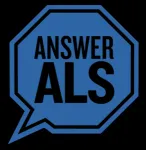(Press-News.org) To determine the type and severity of a cancer, pathologists typically analyze thin slices of a tumor biopsy under a microscope. But to figure out what genomic changes are driving the tumor’s growth — information that can guide how it is treated — scientists must perform genetic sequencing of the RNA isolated from the tumor, a process that can take weeks and costs thousands of dollars.
Now, Stanford Medicine researchers have developed an artificial intelligence-powered computational program that can predict the activity of thousands of genes within tumor cells based only on standard microscopy images of the biopsy. The tool, described online in Nature Communications Nov. 14, was created using data from more than 7,000 diverse tumor samples. The team showed that it could use routinely collected biopsy images to predict genetic variations in breast cancers and to predict patient outcomes.
“This kind of software could be used to quickly identify gene signatures in patients’ tumors, speeding up clinical decision-making and saving the health care system thousands of dollars,” said Olivier Gevaert, PhD, a professor of biomedical data science and the senior author of the paper.
The work was also led by Stanford graduate student Marija Pizuria and postdoctoral fellows Yuanning Zheng, PhD, and Francisco Perez, PhD.
Driven by genomics
Clinicians have increasingly guided the selection of which cancer treatments — including chemotherapies, immunotherapies and hormone-based therapies — to recommend to their patients based on not only which organ a patient’s cancer affects, but which genes a tumor is using to fuel its growth and spread. Turning on or off certain genes could make a tumor more aggressive, more likely to metastasize, or more or less likely to respond to certain drugs.
However, accessing this information often requires costly and time-consuming genomic sequencing.
Gevaert and his colleagues knew that the gene activity within individual cells can alter the appearance of those cells in ways that are often imperceptible to a human eye. They turned to artificial intelligence to find these patterns.
The researchers began with 7,584 cancer biopsies from 16 different of cancer types. Each biopsy had been sliced into thin sections and prepared using a method known as hematoxylin and eosin staining, which is standard for visualizing the overall appearance of cancer cells. Information on the cancers’ transcriptomes — which genes the cells are actively using — was also available.
A working model
After the researchers integrated their new cancer biopsies as well as other datasets, including transcriptomic data and images from thousands of healthy cells, the AI program — which they named SEQUOIA (slide-based expression quantification using linearized attention) — was able to predict the expression patterns of more than 15,000 different genes from the stained images. For some cancer types, the AI-predicted gene activity had a more than 80% correlation with the real gene activity data. In general, the more samples of any given cancer type that were included in the initial data, the better the model performed on that cancer type.
“It took a number of iterations of the model for it to get to the point where we were happy with the performance,” Gevaert said. “But ultimately for some tumor types, it got to a level that it can be useful in the clinic.”
Gevaert pointed out that doctors are often not looking at genes one at a time to make clinical decisions, but at gene signatures that include hundreds of different genes. For instance, many cancer cells activate the same groups of hundreds of genes related to inflammation, or hundreds of genes related to cell growth. Compared with its performance at predicting individual gene expression, SEQUOIA was even more accurate at predicting whether such large genomic programs were activated.
To make the data accessible and easy to interpret, the researchers programmed SEQUOIA to display the genetic findings as a visual map of the tumor biopsy, letting scientists and clinicians see how genetic variations might be distinct in different areas of a tumor.
Predicting patient outcomes
To test the utility of SEQUOIA for clinical decision making, Gevaert and his colleagues identified breast cancer genes that the model could accurately predict the expression of and that are already used in commercial breast cancer genomic tests. (The Food and Drug Administration-approved MammaPrint test, for instance, analyzes the levels of 70 breast-cancer-related genes to provide patients with a score of the risk their cancer is likely to recur.)
“Breast cancer has a number of very well-studied gene signatures that have been shown over the past decade to be highly correlated with treatment responses and patient outcomes,” Gevaert said. “This made it an ideal test case for our model.”
SEQUOIA, the team showed, could provide the same type of genomic risk score as MammaPrint using only stained images of tumor biopsies. The results were repeated on multiple different groups of breast cancer patients. In each case, patients identified as high risk by SEQUOIA had worse outcomes, with higher rates of cancer recurrence and a shorter time before their cancer recurred.
The AI model can’t yet be used in a clinical setting — it needs to be tested in clinical trials and be approved by the FDA before it’s used in guiding treatment decisions — but Gevaert said his team is improving the algorithm and studying its potential applications. In the future, he said, SEQUOIA could reduce the need for expensive gene expression tests.
“We’ve shown how useful this could be for breast cancer, and we can now use it for all cancers and look at any gene signature that is out there,” he said. “It’s a whole new source of data that we didn’t have before.”
Scientists from Roche Diagnostics were also authors of the paper.
Funding for this research was provided by the National Cancer Institute (grant R01 CA260271), a fellowship of the Belgian American Educational Foundation, a grant from Fonds Wetenschappelijk Onderzoek-Vlaanderen, the Fulbright Spanish Commission and Ghent University.
END
AI tool ‘sees’ cancer gene signatures in biopsy images
AI tool reads biopsy images
2024-11-14
ELSE PRESS RELEASES FROM THIS DATE:
Answer ALS releases world's largest ALS patient-based iPSC and bio data repository
2024-11-14
Answer ALS Releases World's Largest ALS Patient-Based iPSC and Bio Data Repository
Unprecedented resource, created with Cedars-Sinai, to accelerate ALS research and drive development of targeted therapies globally
NEW ORLEANS, [November 14, 2024] — In a landmark continuing collaboration, Answer ALS and Cedars-Sinai have announced the completed availability of the largest amyotrophic lateral sclerosis (ALS) patient-based induced pluripotent stem cell (iPSC) and bio data repository. The repository encompasses biological and clinical data from nearly 1,000 ALS patients, offering an unprecedented resource for global ...
2024 Joseph A. Johnson Award Goes to Johns Hopkins University Assistant Professor Danielle Speller
2024-11-14
WASHINGTON, Nov. 14, 2024 – AIP and the National Society of Black Physicists congratulate Danielle Speller as the winner of the 2024 Joseph A. Johnson Award for Excellence. Jessica Esquivel is also being recognized with an Honorable Mention.
The Johnson Award, now in its fifth year, is given jointly by AIP and NSBP to recognize early-career scientists who demonstrate scientific ingenuity and impactful mentorship and service—the core values of NSBP founder Joseph A. Johnson.
“Dr. Speller not only ...
Slow editing of protein blueprints leads to cell death
2024-11-14
FRANKFURT. Genes contain the essential building instructions for life, guiding cells on which amino acids to assemble in what sequence to produce specific proteins. The human genome codes for about 20,000 such instructions. “Nevertheless, our cells can produce several hundred thousand different proteins,” explains Prof. Ivan Đikić from the Institute of Biochemistry II at Goethe University Frankfurt.
This diversity is enabled by a process known as “splicing.” When a cell requires a protein, it generates a copy of the relevant instructions in the cell nucleus. During splicing, this transcript undergoes modification: a cellular editing complex, the spliceosome, ...
Industrial air pollution triggers ice formation in clouds, reducing cloud cover and boosting snowfall
2024-11-14
Pollution from industrial hotspots can trigger ice formation in supercooled clouds, altering their reflective properties and increasing regional snowfall, according to a new study. The findings shed light on poorly understood impacts of anthropogenic aerosols on climate and could help improve climate modeling and mitigation strategies. The impact of human-generated aerosols (tiny air pollution particles) on climate, particularly in counteracting greenhouse gas-induced warming, remains uncertain. These aerosols, in addition to influencing cloud formation as cloud condensation nuclei (CCN), may also act as ice-nucleating particles (INPs), crucial for ice formation in supercooled ...
Emerging alternatives to reduce animal testing show promise
2024-11-14
In a Policy Forum, Chad Nelson and colleagues highlight the efforts of the U.S. Food and Drug Administration (FDA) in advancing alternative methods to reduce animal testing for regulatory use. Animal studies have been crucial for advancing disease understanding, developing therapies, and assessing the safety and effectiveness of consumer products. However, reducing animal use and developing effective alternatives is an ongoing priority. Although advances in biology, engineering, and artificial intelligence offer new opportunities to improve product safety assessments, these technologies require extensive development to meet regulatory ...
Presenting Evo – a model for decoding and designing genetic sequences
2024-11-14
A new study presents “Evo” – a machine learning model capable of decoding and designing DNA, RNA, and protein sequences, from molecular to genome scale, with unparalleled accuracy. Evo’s ability to predict, generate, and engineer entire genomic sequences could change the way synthetic biology is done. “The ability to predict the effects of mutations across all layers of regulation in the cell and to design DNA sequences to manipulate cell function would have tremendous diagnostic and therapeutic implications for disease,” writes Christina Theodoris ...
Global plastic waste set to double by 2050, but new study offers blueprint for significant reductions
2024-11-14
Without intervention, global plastic waste could double by 2050, a new machine learning study predicts. However, according to simulations by the study’s authors, a mix of policy interventions could cut plastic waste by more than 90% and it could cut plastics-related emissions by a third. With UN treaty negotiations underway, these findings provide a crucial blueprint for tackling the plastic crisis. Plastic production has increased relentlessly for decades, leading to surging plastic waste generation and environmental mismanagement. As plastic ...
Industrial snow: Factories trigger local snowfall by freezing clouds
2024-11-14
Anthropogenic aerosols, tiny solid and liquid air pollution particles, have masked a fraction of global warming caused by anthropogenic greenhouse gases. Climate researchers have known for decades that anthropogenic aerosols perturb liquid clouds by enabling the formation of a larger number of cloud droplets, making clouds brighter. A new landmark study led by the University of Tartu suggests that anthropogenic aerosols may also influence clouds by converting cloud droplets to ice at temperatures below zero degrees Celsius.
Powerplant Snow
Using satellite observations, climate researchers discovered unique plumes of ice clouds and reduced cloud cover downwind of industrial hot spots ...
Backyard birds learn from their new neighbors when moving house
2024-11-14
Scientists have found a trigger for social learning in wild animals. An experiment on great tits has pinpointed a single factor—immigration—that can cause birds to pay close attention to others, leading them to rapidly adopt useful behaviors. The study is the first to provide experimental support of a long-held assumption that immigrants should strategically use social learning. The study, conducted by scientists from the Max Planck Institute of Animal Behavior (MPI-AB) and the Cluster of Excellence Collective Behaviour at the University of Konstanz in Germany, is published November 14 in PLOS Biology.
Many animals that live in groups learn from one another, but few ...
New study in Science finds that just four global policies could eliminate more than 90% of plastic waste and 30% of linked carbon emissions by 2050
2024-11-14
Berkeley, CA/Santa Barabara, CA (14 November 2024) — A new study released in Science today determines that just four policies can reduce mismanaged plastic waste — plastic that isn’t recycled or properly disposed of and ends up as pollution — by 91% and plastic-related greenhouse gasses by one-third. The policies are: mandate new products be made with 40% post-consumer recycled plastic; cap new plastic production at 2020 levels; invest significantly in plastic waste management — such as landfills and waste collection services; and implement a small fee on plastic packaging. ...
LAST 30 PRESS RELEASES:
Numbers in our sights affect how we perceive space
SIMJ announces global collaborative book project in commemoration of its 75th anniversary
Air pollution exposure and birth weight
Obstructive sleep apnea risk and mental health conditions among older adults
How talking slows eye movements behind the wheel
The Ceramic Society of Japan’s Oxoate Ceramics Research Association launches new international book project
Heart-brain connection: international study reveals the role of the vagus nerve in keeping the heart young
Researchers identify Rb1 as a predictive biomarker for a new therapeutic strategy in some breast cancers
Survey reveals ethical gaps slowing AI adoption in pediatric surgery
Stimulant ADHD medications work differently than thought
AI overestimates how smart people are, according to HSE economists
HSE researchers create genome-wide map of quadruplexes
Scientists boost cell "powerhouses" to burn more calories
Automatic label checking: The missing step in making reliable medical AI
Low daily alcohol intake linked to 50% heightened mouth cancer risk in India
American Meteorological Society announces Rick Spinrad as 2026 President-Elect
Biomass-based carbon capture spotlighted in newly released global climate webinar recording
Illuminating invisible nano pollutants: advanced bioimaging tracks the full journey of emerging nanoscale contaminants in living systems
How does age affect recovery from spinal cord injury?
Novel AI tool offers prognosis for patients with head and neck cancer
Fathers’ microplastic exposure tied to their children’s metabolic problems
Research validates laboratory model for studying high-grade serous ovarian cancer
SIR 2026 delivers transformative breakthroughs in minimally invasive medicine to improve patient care
Stem Cell Reports most downloaded papers of 2025 highlight the breadth and impact of stem cell research
Oxford-led study estimates NHS spends around 3% of its primary and secondary care budget on the health impacts of heat and cold in England
A researcher’s long quest leads to a smart composite breakthrough
Urban wild bees act as “microbial sensors” of city health.
New study finds where you live affects recovery after a hip fracture
Forecasting the impact of fully automated vehicle adoption on US road traffic injuries
Alcohol-related hospitalizations from 2016 to 2022
[Press-News.org] AI tool ‘sees’ cancer gene signatures in biopsy imagesAI tool reads biopsy images
